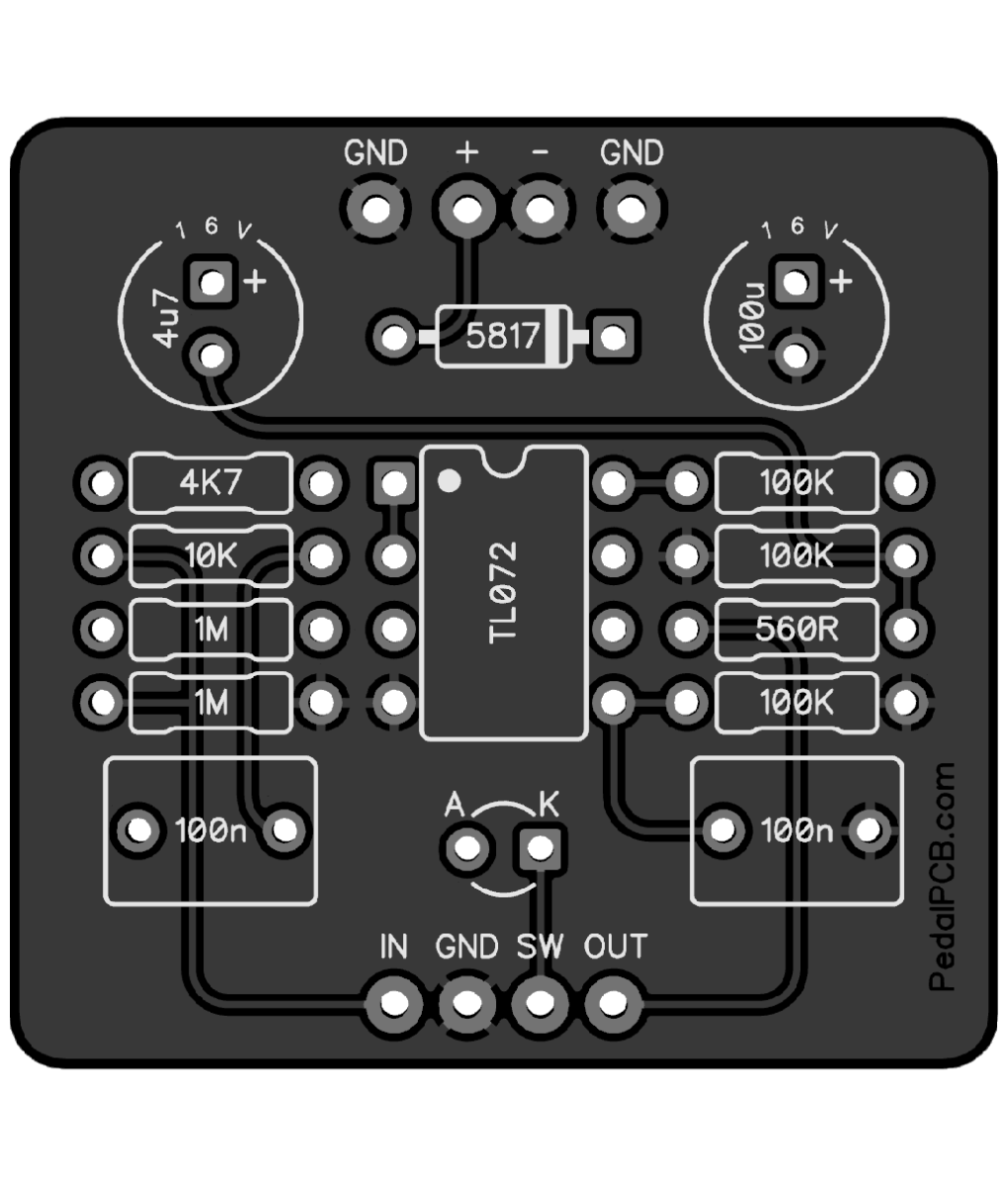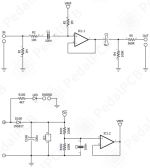Not sure if this belongs in this subforum, apologies if I’m in the wrong place.
I’m trying to better understand my volume pedal. It’s a Goodrich L10K active pedal. Unfortunately, I don’t have a full trace as I didn’t have time to remove the whole board to see the underside. But just looking at the components, I’m thinking it’s nothing more than a buffer. Hopefully, someone here can confirm and tell me a little about what the components are doing. It’s a tiny board built on what I believe is vero.
I see a 4K7 and 0R resistor, MC33171P opamp, a 4u7 tantalum cap, a 360K and 390K resistor, and a 220n cap. The pot is 10K linear. There is an instrument in, an amplifier out, and an unlabeled out that I believe is a tuner out (which I’ve never used).
I was unfamiliar with the MC33171P, but it is an obsolete low power single opamp, and I imagine it was chosen for long battery life as this pedal has no DC jack.
Any insight into this circuit would be appreciated. Particularly, I’m interested to know if it’s an efficient and elegant way of doing things, or if there is a better way. Thanks!
I’m trying to better understand my volume pedal. It’s a Goodrich L10K active pedal. Unfortunately, I don’t have a full trace as I didn’t have time to remove the whole board to see the underside. But just looking at the components, I’m thinking it’s nothing more than a buffer. Hopefully, someone here can confirm and tell me a little about what the components are doing. It’s a tiny board built on what I believe is vero.
I see a 4K7 and 0R resistor, MC33171P opamp, a 4u7 tantalum cap, a 360K and 390K resistor, and a 220n cap. The pot is 10K linear. There is an instrument in, an amplifier out, and an unlabeled out that I believe is a tuner out (which I’ve never used).
I was unfamiliar with the MC33171P, but it is an obsolete low power single opamp, and I imagine it was chosen for long battery life as this pedal has no DC jack.
Any insight into this circuit would be appreciated. Particularly, I’m interested to know if it’s an efficient and elegant way of doing things, or if there is a better way. Thanks!




